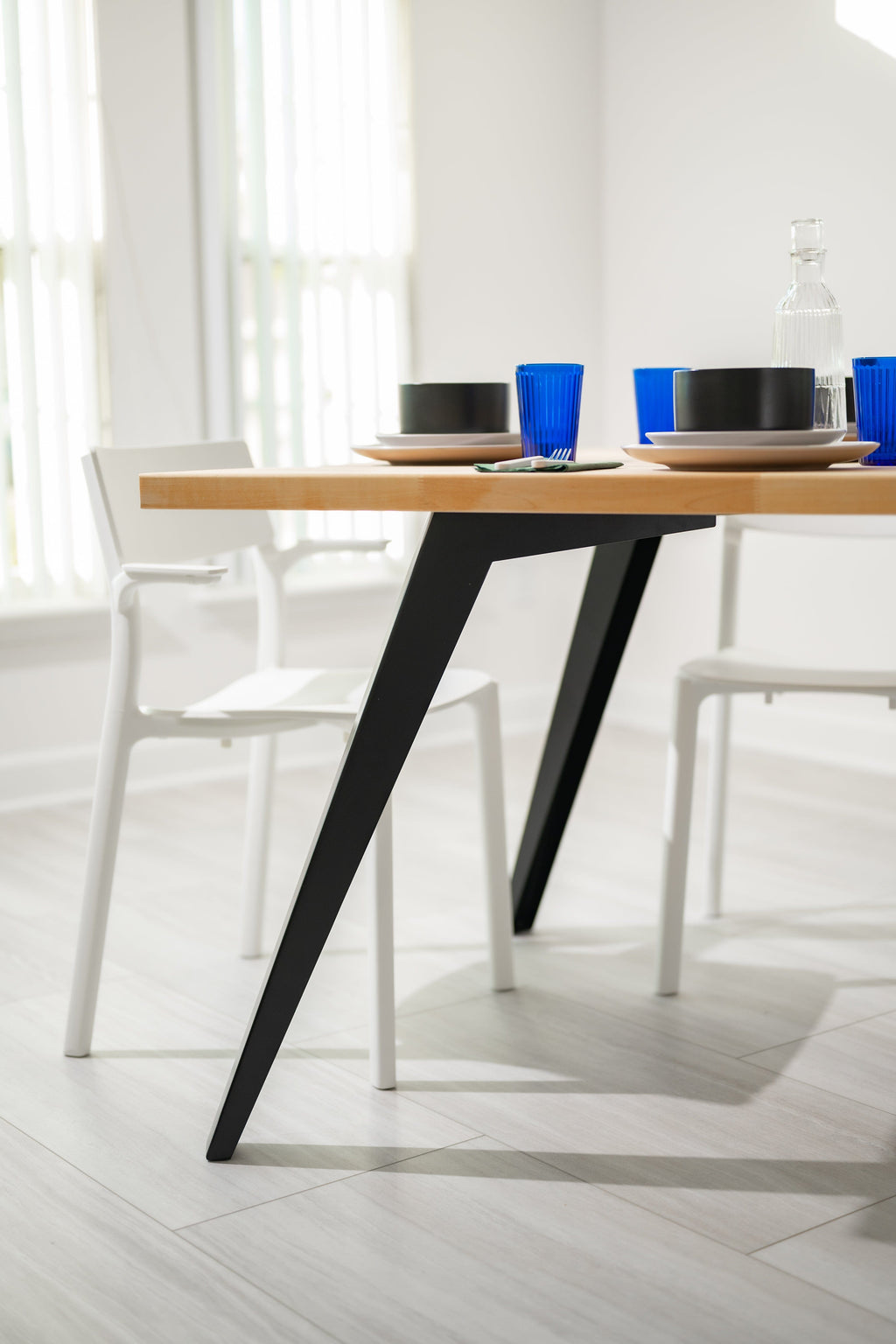Tips for Installing Dining Room Table Legs for a Modern Look
Tips for Installing Dining Room Table Legs for a Modern Look
Blog Article
From Typical to Modern: Find the Suitable Dining-room Table Legs for Your Design
While traditional designs such as cabriole and turned legs stimulate a feeling of timeless elegance, contemporary styles like barrette and geometric choices offer a possibility for striking visual passion. As you consider these components, the inquiry stays: how can you seamlessly incorporate these varied leg designs to develop an unified dining experience?
Understanding Table Leg Styles
The variety of eating space table leg designs can significantly influence both the looks and capability of the space. Each leg style adds one-of-a-kind sensible functions and aesthetic elements, catering to diverse style choices and use needs. Comprehending these styles is vital for picking the right table that aligns with your overall interior layout vision.
As an example, conical legs provide a tidy, classic appearance that can improve a room's sophistication, while stand bases offer security and optimize legroom, making them excellent for smaller areas. Barrette legs, a characteristic of mid-century modern-day style, present a commercial panache, enabling a ventilated, open feel. Trestle legs stimulate rustic charm, giving durable support and a sense of timelessness.
Wooden legs can bring warmth and structure, whereas metal options often communicate a streamlined, modern ambiance. Eventually, understanding table leg designs is crucial for producing a cohesive eating area that mirrors personal style while making certain usefulness and comfort.
Conventional Table Leg Options
When selecting eating space table legs, standard choices typically embody timeless beauty and workmanship. These styles mirror a rich heritage and a commitment to top quality, making them optimal for those who value traditional aesthetic appeals.
One of the most legendary standard leg styles is the cabriole leg, characterized by its elegant curved shape. This design frequently features ornamental carvings and is most commonly discovered in Queen Anne and Chippendale furnishings. One more prominent choice is the transformed leg, which flaunts a series of smooth, rounded forms that give a classic look while keeping stability.
In addition, the straight leg, while straightforward, uses a sturdy and basic structure that can blend perfectly with a selection of tabletop styles. For those attracted to ornate describing, claw-and-ball feet legs stimulate a sense of grandeur and can serve as a stunning prime focus in any kind of dining room.
Finally, pedestal bases, although not strictly legs, supply an alternative traditional choice that allows for enough legroom and can be perfectly sculpted. Each of these conventional leg designs adds to the overall atmosphere of a dining-room, weding function with visual allure.

Modern Table Leg Layouts
Modern table leg designs supply a diverse series of styles that stress innovative products and tidy lines. These styles frequently focus on performance while functioning as striking focal factors within a dining room. Minimal visual appeals prevail, with legs crafted from materials such as steel, glass, and crafted wood, which add to a modern and airy feel.
One preferred design is the hairpin leg, identified by its slim, tapered framework that gives security without frustrating the tabletop (dining room table legs). This design is frequently located in mid-century contemporary furnishings and can easily enhance numerous dining table shapes. One more fad is using geometric shapes, where legs may tackle unbalanced or angular types, adding aesthetic passion and a touch of artistry

Mixing Designs for Distinct Spaces
Commonly, property owners look for check here to produce special dining areas that show their individual style by blending different design aspects. This strategy enables the consolidation of diverse visual appeals, causing a harmonious yet distinct environment. For example, combining a rustic wooden table with streamlined, modern-day steel legs can produce an appealing contrast that elevates the area's general charm.
In addition, incorporating vintage table legs with modern table tops can evoke a sense of background while keeping a contemporary sensibility. Such combinations not just showcase specific preference however likewise urge creativity, allowing property owners to curate a space that really sites feels both personal and inviting.
Shade plays a critical duty in this mixing process; selecting table legs that match or contrast with the existing color design can improve visual interest. Whitewashed legs can soften the boldness of a dark table surface, developing a balanced aesthetic.
Tips for Picking the Right Legs
Selecting the right table legs is necessary for achieving both performance and aesthetic charm in your dining space. Begin by taking into consideration the general style of your space. Typical setups take advantage of legs that feature complex makings or transformed styles, while modern rooms may require streamlined, minimalist designs.
Next, assess the elevation and security of the legs. dining room table legs. Typical table range in between 28 to 30 inches in elevation, so make sure the legs enhance this measurement for comfort. In addition, robust products, such as wood or steel, can enhance security and longevity
Examine the leg form also-- options consist of straight, tapered, or stand designs. Straight legs provide a traditional look, while conical legs can include a Learn More touch of elegance. Pedestal bases offer adequate legroom and are suitable for smaller sized spaces.
Verdict
In recap, selecting the optimal dining room table legs needs careful consideration of both modern and standard designs. By integrating leg design, elevation, and material with the overall decoration, a natural and welcoming environment can be accomplished.
The selection of dining room table leg styles can considerably affect both the aesthetics and functionality of the room. Eventually, comprehending table leg styles is essential for producing a natural eating area that shows personal style while making sure usefulness and convenience.One of the most iconic traditional leg designs is the cabriole leg, characterized by its graceful bent form. Straight legs use a classic appearance, while tapered legs can include a touch of sophistication.In summary, selecting the optimal dining area table legs needs cautious consideration of both standard and contemporary styles.
Report this page